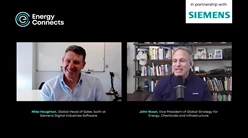Brazil's renewable revolution: World Bank and DNV chart ambitious offshore wind development roadmap
With Brazil's offshore wind potential soaring to over 1,200 GW—comprising 480 GW from fixed foundations and 748 GW from floating foundations—this abundant resource, strategically located near major demand centers, is set to transform the nation's energy landscape, according to World Bank Group's Scenarios for Offshore Wind Development in Brazil report, conducted by DNV.
Developed in collaboration with Brazil's Ministry of Mines and Energy (MME) and the Energy Research Office (EPE), the report provides a detailed blueprint for policymakers and stakeholders, emphasising the urgent need for a cohesive energy strategy, substantial infrastructure investments, and immediate action to harness offshore wind potential.
The report details a vision for a future under three different Growth Scenarios:
- Base Case: 16 GW by 2050, representing 3% of Brazil's generation capacity.
- Intermediate: 32 GW by 2050, accounting for 6% of the total generation capacity.
- Ambitious: 96 GW by 2050, comprising nearly 20% of the generation mix.
Offshore wind development in Brazil offers a promising complement to hydroelectric power, reducing interannual variability and providing a buffer during dry periods. It also supports Brazil's green hydrogen targets and can drive economic growth and job creation, potentially generating up to 516,000 full-time equivalent jobs and contributing $168 billion in national gross value added under the Ambitious scenario. Additionally, it can streamline local electricity generation, reducing transmission losses by aligning resources with demand centers, including major cities.
However, several challenges exist, including high initial costs that require concessional finance and strategic seabed rights allocation. Despite projections of significant long-term cost reductions, financing and procurement complexities remain. Substantial investments are also needed for transmission upgrades and grid flexibility to integrate offshore wind effectively. Environmental and social considerations further complicate development, necessitating meticulous planning and community consultations. Upgrading regional ports, logistics infrastructure, and the offshore wind supply chain to support larger turbine production adds to the overall costs.
Strategic planning, collaboration, and targeted investments can help overcome these obstacles and unlock the full potential of offshore wind energy in Brazil's renewable energy transition.
Santiago Blanco, Executive Vice-President and Regional Director for Latin America, Energy Systems at DNV, commented, "This report highlights the immense potential of offshore wind in Brazil and provides guidelines for its development. The country's choice to embrace offshore wind power hinges on balancing energy demands, climate goals, and economic growth. Our research offers insights, not directives, outlining the challenges and opportunities to inform strategic decisions."
The success of Brazil's offshore wind sector depends on establishing a long-term energy strategy, as emphasised in the World Bank Group's report on “Key Factors for Successful Development of Offshore Wind in Emerging Markets”. The chosen path will shape the role of wind power in Brazil's future, from a marginal role under the Base Case to significant economic transformation in the Ambitious scenario.
Tchiarles Coutinho Hilbig, Market Area Manager for South America at DNV, highlighted that “the report comes at a pivotal moment, anticipating regulatory approval for offshore wind in the country. It provides valuable insights on technological, environmental, economic, and policy factors influencing the sector's growth. Using DNV's advanced design models with real data on resources, site conditions, and key projects, it’ll equip stakeholders to make informed decisions and strategies for sustainable industry expansion.”
Whatever course policymakers and stakeholders choose to chart, they must act swiftly to capitalise on current interest, particularly amid waning investor enthusiasm for emerging markets. Updates in transmission networks, port infrastructure, and manufacturing capabilities, along with Environmental & Social sensitivity mapping – all prerequisites for offshore wind development –, have lengthy timelines. Providing a clear market entry pathway, including seabed exclusivity and offtake arrangements in initial offshore wind auctions, is essential.





